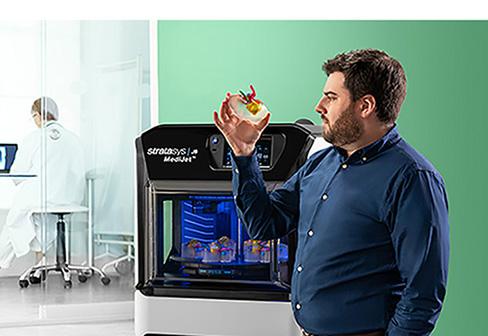
November 15, 2021 — Ricoh USA Inc. announced RICOH 3D for Healthcare, an integrated end-to-end workflow solution that makes the development, design and production of 3D-printed anatomic models simple, accurate and easy. RICOH 3D for Healthcare makes it possible for healthcare providers nationwide to develop patient-specific representations of tissue and bone. The lifelike replicas serve as physical simulators to help clinicians see inside anatomy for greater visibility into patient needs. These 3D-printed replicas are for non-diagnostic/treatment use.
Ricoh's solution integrates with IBM iConnect Access from IBM Watson Health, an enterprise imaging solution many healthcare providers already use, making it easy for clinicians to incorporate into their existing workflow. Once a healthcare professional uses the interactive segmentation tool within IBM iConnect Access and submits a request for a 3D-printed anatomic model, Ricoh facilitates the entire development process on the centralized HIPAA-compliant platform to produce and deliver accurate 3D-printed models.
“Currently, access to 3D-printed models is limited to very few healthcare organizations, meaning the vast majority of clinicians – and their patients – cannot benefit from this critical tool,” said Gary Turner, managing director, Additive Manufacturing, North America, Ricoh USA Inc. “RICOH 3D for Healthcare offers a turnkey and cost-effective solution that can drastically expand access to 3D models and allow healthcare providers at any size facility to learn from and inform the overall patient experience.”
Any facility with access to IBM iConnect Access can get started quickly with 3D printed models. The system is easy to use, fast and accurate, with minimal initial costs so clinicians can focus on collaborating with colleagues and providing exceptional patient care. Additionally, medical schools and simulation labs for surgical education can benefit from Ricoh's solution by connecting students and residents with cadaver-free, lifelike representations of abnormal anatomy or specific case studies.
For more information: www.ricoh.com


 August 06, 2024
August 06, 2024 








